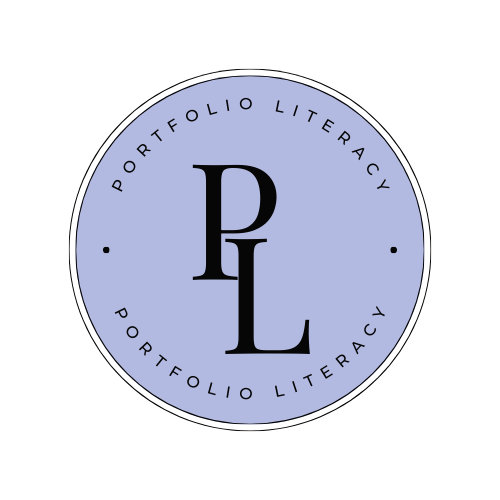When managing a 100K dividend portfolio, diversification is key to mitigating risks and ensuring steady growth. You want a mix of high-yield dividend stocks and reliable growth companies. By diversifying your +100K dividend portfolio, you protect your investments against market volatility while securing consistent income through dividends. This strategy requires a careful selection process to balance different sectors and regions, making your portfolio resilient.
Your focus should include adding both growth and value stocks to maintain a balanced investment approach. Choosing stocks from various industries, such as technology, healthcare, and consumer goods, can provide stability. This mixture helps maximize returns and ensures that downturns in one sector don’t drastically affect your overall portfolio.
As you refine your dividend portfolio, constantly assess potential risks and adjust your holdings accordingly. Monitoring and occasionally rebalancing your investments will ensure your portfolio remains on track for long-term growth.
Key Takeaways
- Diversify your portfolio with high and low dividend yielding stocks
- Mix stocks from different sectors to stabilize returns.
- Regularly reassess and rebalance your portfolio for long-term success.
Your 100K Dividend Portfolio’s Core Positions
Allocating to investments with various expected areas of return for both appreciation and income is important for all portfolios, however if you are building a dividend portfolio there is an inherent opportunity for both. Many diversification principles for portfolio building should apply to your dividend portfolio as well.
Core Positions
To make life easy, you should avoid tracking hundreds of stocks and allocate to 2 to 3 ETFs that capture companies of various industries, sizes, and dividend yields. You want to ensure that the expense ratios on the ETFs you allocate to are .5% or less to protect your returns. I would recommend that the ETFs make up most if not all of your dividend portfolio. You can use unallocated capital (if any) outside of these ETFs to build 1 or 2 concentrated bets in companies that you believe have opportunity for appreciation in the long term.
Managing Concentration Risk
Concentration risk is the risk that you have too much of your portfolio in one underlying position. You may see significant upward moves in your dividend portfolio if the company is doing well, however you also could see significant loss if it does not go in your favor. It is important to never have a significant position in a single company, that it exceeds anywhere between 5% to 10% of your net worth. You may choose to allocate +50% of your dividend portfolio to a single ETF to get the inherent diversification they offer; however, the underlying positions should not exceed your risk threshold for concentration.
Maintaining a Diversified Dividend Portfolio
Dividend investors build their dividend portfolio in many ways, but many focus on dividend yield and dividend growth to eventually live off only dividends in their future. When building your portfolio, you should keep these in mind so that your dividend portfolio grows in size and yield.

What to look for in Dividend Growth
Dividend aristocrats are stocks that have provided a reliable dividend yield over time and have consistently increased their dividend yield for at least 25 years. Their performance and continued dividend growth helps increase the income received over time, so not only does the size of your dividend portfolio increase but also the income it generates. Maintaining an allocation to several dividend aristocrats should provide the continued growth to dividend yield that investors look for.
What to look for in Dividend Yield
Only buying companies with high dividend yields is not the smartest approach, as you miss out on companies that provide returns through appreciation. Take NVIDIA for example, as it has had a stellar 2 years but has a very small dividend. In Q1 2023, it had a dividend yield of .07% but has appreciated by nearly 500% from then, as of Q4 2024. Dividend yield is not everything, so it is okay with allocating to low dividend yielding companies as well as high dividend yielding companies.
Your dividend portfolio’s average yield should be what you focus on as you approach the idea of living off of dividends in your portfolio. However, while you are in the wealth building stage, a low dividend yield may not be a bad thing. It is important that if you are in the wealth building stage of your portfolio, that you are continuing to add more capital to your portfolio and reinvest your dividends for long term growth.
Asset Location Strategies
Asset location is crucial when maintaining your $100K dividend portfolio because it directly affects how much of your dividend income you get to keep after taxes. Placing dividend-generating assets in tax-advantaged accounts, such as a Roth IRA or a 401(k), allows your investments to grow tax-free or tax-deferred, maximizing your compounding potential. This means you can reinvest dividends without having to worry about taxes eroding your returns each year, significantly boosting your long-term portfolio growth.
In contrast, holding dividend-paying stocks in taxable accounts exposes your dividends to income taxes, which can reduce your overall returns, especially if you’re in a high tax bracket. Strategically placing high-yield dividend stocks in tax-advantaged accounts while holding assets with lower tax implications in taxable accounts can optimize your portfolio’s performance. This tax saving strategy can help your $100K dividend portfolio grow to $1M even faster.
Managing Dividend Specific Risks in a Dividend Portfolio
Effectively managing risks in a dividend portfolio is essential to protect your investments and ensure steady income. Key strategies include being wary of the yield trap, handling potential dividend cuts, and ensuring diversification beyond just stocks.
Avoiding the Yield Trap
The yield trap is when stocks appear attractive due to high dividend yields, but these yields are often unsustainable. You should look into the company’s financial health and financial statements. High yields may signal potential problems, such as low future earnings.
Focus on stocks with consistent dividend payouts. Historical performance can provide insight into how well a company manages payouts. Keep an eye on factors like inflation risk and interest rates that affect dividends. A sustainable yield is often more beneficial in the long term than a high, risky one.
Dealing with Dividend Cuts
Dividend cuts can significantly impact your income and reinvestments when you are reinvesting dividends. It’s important to identify companies with stable earnings and strong cash flow, like the dividend aristocrats previously mentioned. Companies dealing with financial challenges or lacking clear growth plans may reduce their payouts.
Monitor your portfolio regularly to identify early warning signs. Sudden drops in a stock’s price or changes in management strategy can be red flags. Ensure that you are diversifying your entire portfolio with bonds or other debt securities to provide a safety net against such cuts. This helps balance risks and maintains a steady income stream despite stock downturns.
Diversifying Beyond Stocks
Your total portfolio, all of your financial assets, should be looked at all together, and your capital should be allocated with everything in mind. Focusing only on your dividend portfolio can be fun, but it should be balanced with your other financial assets. Bonds and real estate investments can provide additional stability and income to your overall portfolio. They often have lower volatility compared to stocks and can act as a buffer during economic downturns.
Each asset class reacts differently to factors like inflation risks and market changes. Real estate can offer protection against inflation, while bonds might shield you from stock market volatility. A mix of assets helps ensure overall portfolio stability, cushioning against individual asset fluctuations. While in the wealth building stage, balancing your $100K dividend portfolio with $20K to $40K in bonds is not a bad idea, you can even reinvest the bond coupons into your dividend portfolio for continued growth.
Disclaimer:
This post contains mentions of publicly traded securities. This post is not a recommendation to buy, sell, or trade said securities. Please visit my personal portfolio to see my financial positions for clarity of my biases or inclinations.
